12 Best Vegetables to Grow In Florida (With Pictures)
-
Pete Ortiz
- Last updated:
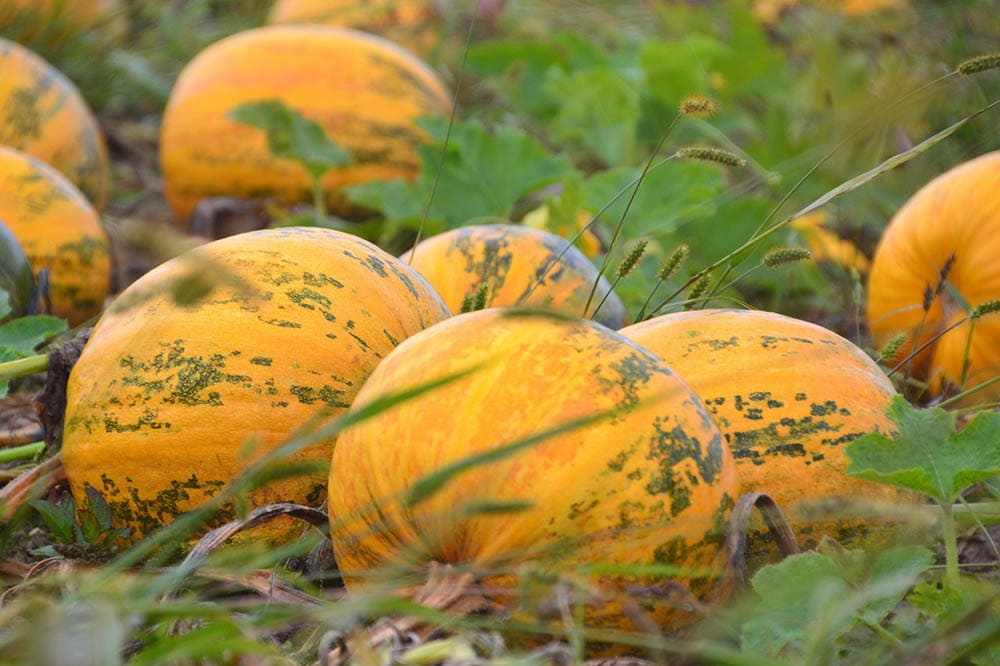
Vegetables are a prime ingredient in cooking, and we all use them daily in almost every meal. Store-bought veggies might be sprayed with pesticides or harmful substances, so why not grow your own veggies to ensure they are adequately grown? If you live in Florida and are considering growing vegetables in your garden, this is the article for you.
Below, we rounded up the 12 best vegetables to grow in Florida, along with some tips and tricks for growing them.
The 12 Best Vegetables to Grow in Florida
1. Squash
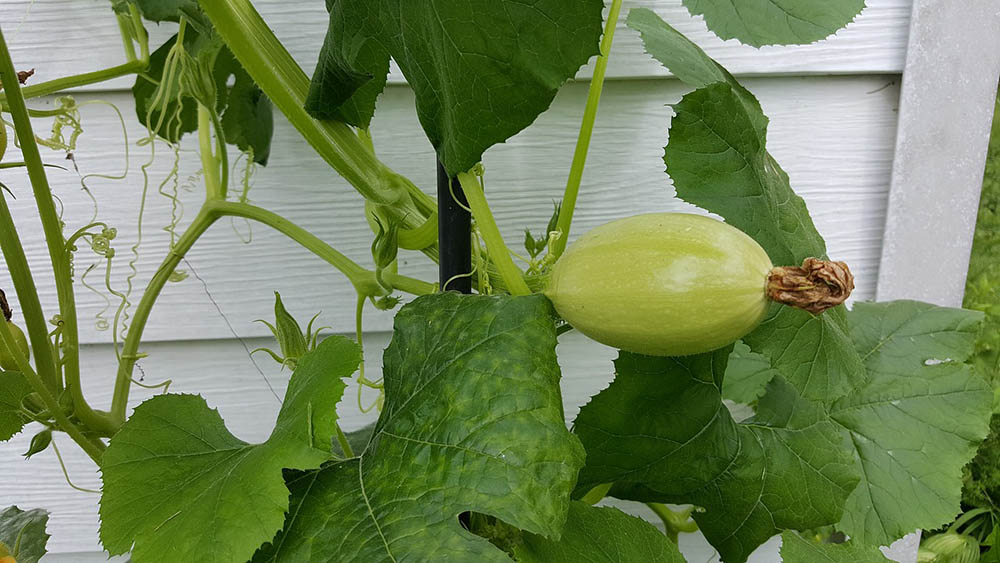
| USDA Hardiness Region | 3–10 |
| Sun | Full sun |
| Soil | Moist |
| Vitamins | A, B6, C |
Squash is a fantastic vegetable that’s filled with vitamins. It comes in many different varieties and needs to be planted in full sun. It requires a USDA hardiness region of 3–10, which is why it’s excellent for growing in Florida. When planting squash, ensure there’s a 3-foot space between each seed. Squash loves water, so its soil always needs to be moist. It’s a plant that’s easy to grow, so you shouldn’t have any issues planting it in your garden.
2. Potato

| USDA Hardiness Region | 3–10 |
| Sun | Full sun |
| Soil | Well-drained/sandy |
| Vitamins | C, B6, B3, B1 |
Potatoes are popular vegetables native to America and known for their sweet-sour taste. When planting potatoes, choose well-drained, sandy soil, and ensure that you’re planting them about 12 inches apart. Once planted, you should cover the potatoes with around 3 inches of soil. They are easy to grow, and you can store them through winter, which is very convenient. You will need to maintain an even moisture level for them to prosper, though. In the garden, you should plant them on a 3-year rotation so that they’re not planted in the same place for too long.
3. Spinach

| USDA Hardiness Region | 2–11 |
| Sun | Full sun/partial shade |
| Soil | Well-drained/moist/loamy |
| Vitamins | A, C, K |
Spinach is a fast-growing vegetable that can be harvested in as little as one month after you’ve planted it. The soil needs to be cold, preferably cooler than 70°F. The seeds should be planted in rows separated by 12–18 inches, and you need to position them in full sun. When it comes to watering, you should water spinach frequently to keep the soil moist. To promote growth, use fertilizers high in nitrogen, and fertilize spinach throughout the season.
4. Radish
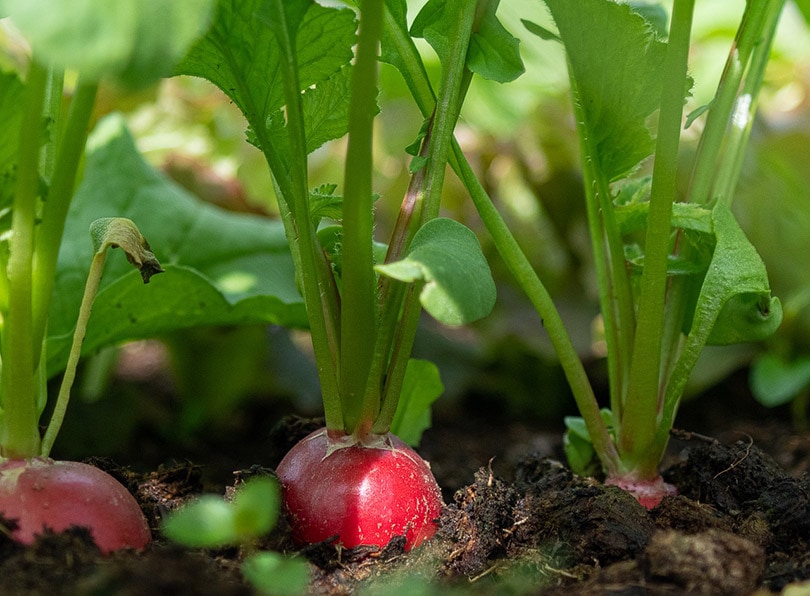
| USDA Hardiness Region | 2–11 |
| Sun | Full sun/partial shade |
| Soil | Light/sandy/loamy |
| Vitamins | C, B6 |
Radish is a small, quick-growing plant. Because radishes are so small, they can easily fit into any garden, and you can plant them between other veggies. When planting radishes, ensure that the seeds are at least 2 inches apart. Some species are harvest-ready in 3 weeks after planting, so you should be prepared for planting new seeds. This veggie needs to be watered regularly because of drought stress, which can cause poor texture and a poor flavor of the roots.
5. Tomato
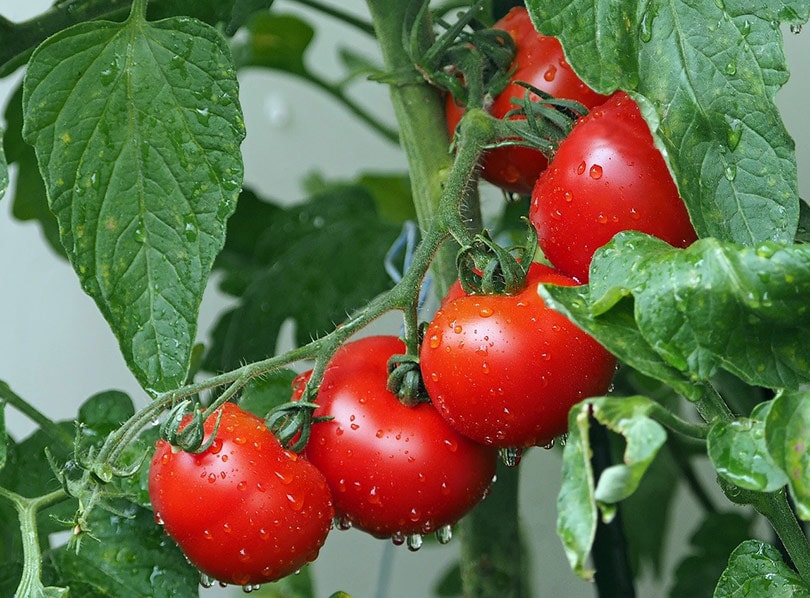
| USDA Hardiness Region | All zones |
| Sun | Full sun |
| Soil | Well-drained |
| Vitamins | C |
Tomato is a veggie grown all over the world. It’s a known plant that’s a part of the nightshade family. People grow tomatoes for their fruits, which we use to prepare various dishes. They can generally reach a height of anywhere from 3 to 10 feet, but they need support because they have a flexible vine—if there’s no support, the plant will spread out on the ground. Your tomato will need regular watering and full sun to reach its potential.
6. Turnip
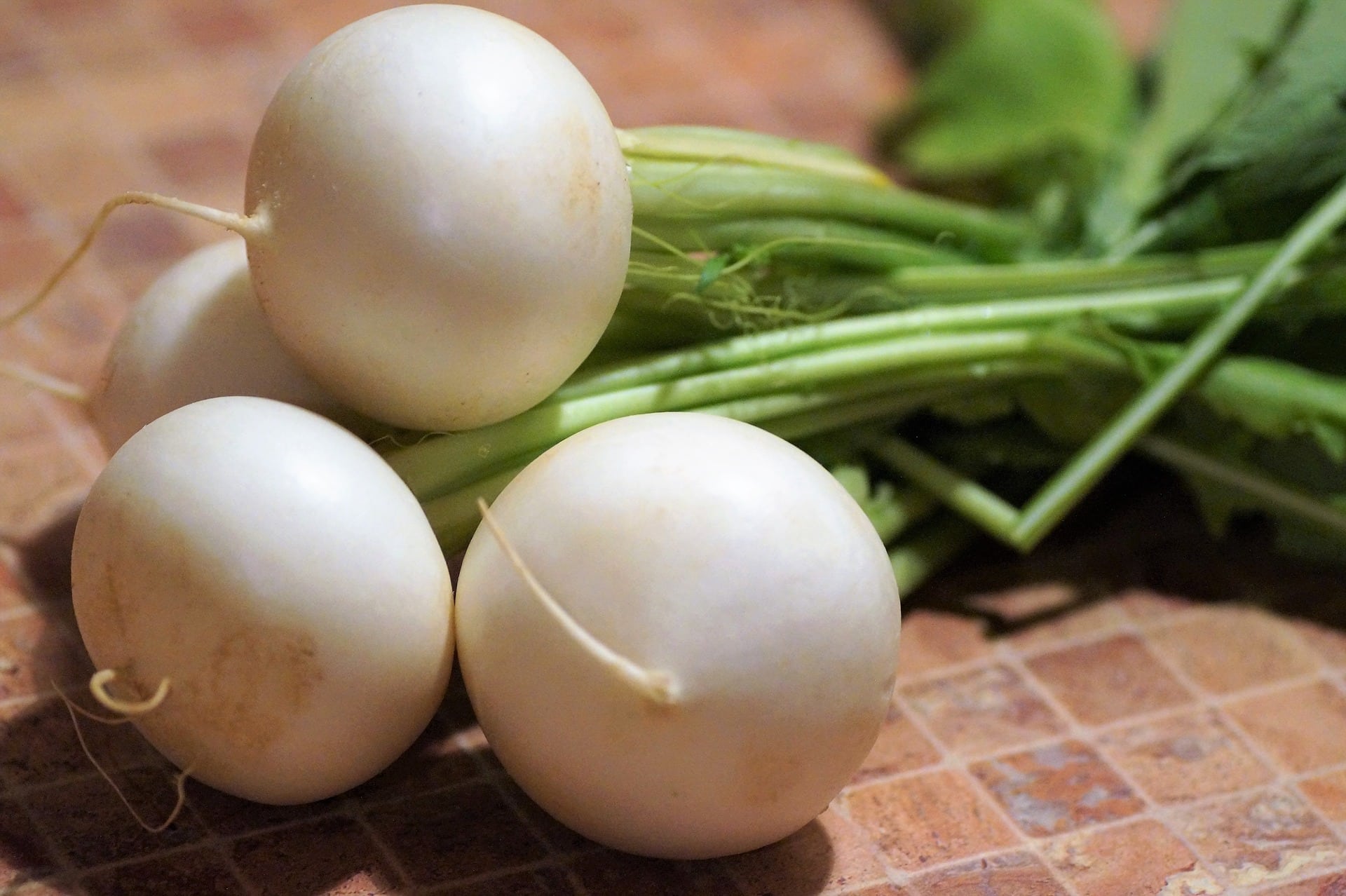
| USDA Hardiness Region | 2–9 |
| Sun | Full sun/partial shade |
| Soil | Slightly acidic/loamy/fertile |
| Vitamins | K, A, C, E, B1, B3, B2, B6, B5 |
Turnip is a fast-growing, cold-weather crop that people have been eating for centuries. If you plant them around spring, you should have turnips all summer, while if you plant them late summer, you’ll end up with a fall crop. The plants should be around 4 inches apart so that the roots can spread without issues. Turnip roots take approximately 40 –60 days to be harvest-ready. Turnip is a hardy plant that is capable of tolerating frost.
7. Corn

| USDA Hardiness Region | 3–11 |
| Sun | Full sun |
| Soil | Well-drained/fertile |
| Vitamins | C, B |
Corn is an excellent vegetable with various purposes. However, most people love it for its sweet taste. The plant is commonly around 8 feet tall, but it can be even larger. One of the benefits when planting corn is that it grows quickly, but you need to ensure you plant it in well-drained soil. Overly moist soils will crust the seed, and the corn won’t grow. When planting, position the seedlings 8–12 inches from one another.
8. Cucumber

| USDA Hardiness Region | 4–12 |
| Sun | Full sun |
| Soil | Well-drained/sandy/loam |
| Vitamins | B, C |
Cucumbers need full sun and well-drained sandy or loamy soil to prosper. They can grow in a bush or as a vine. If you have a small garden, it might be best to grow it as a bush, but if you have enough space go for a vine because it bears more fruits. When planting cucumbers, ensure they’re 36–60 inches apart. As far as maintenance goes, all you need to do is water them weekly, and the plant will easily grow.
9. Kale
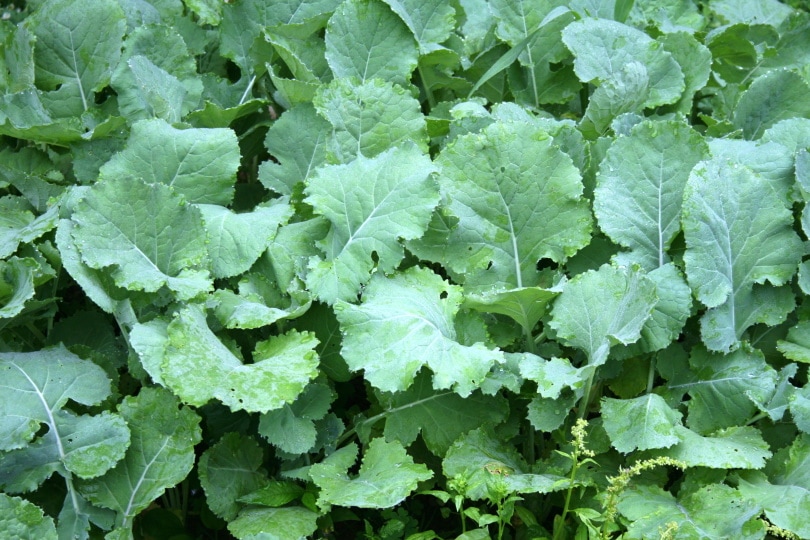
| USDA Hardiness Region | 8–10 |
| Sun | Full sun/partial shade |
| Soil | Well-drained/fertile |
| Vitamins | A, K, B6, C |
Kale is a resilient veggie that’s a member of the cabbage Brassica family. It’s a biennial plant that prospers during spring and fall. Kale is extremely healthy and filled with vitamins. If you’re planning on planting kale, you can choose any time of the year for planting season. Since Florida mostly has pleasant weather, kale will grow well even during wintertime in Florida. The seeds need around 55–75 days to completely mature, so it’s best to plant new seeds every 2–3 weeks.
10. Onion
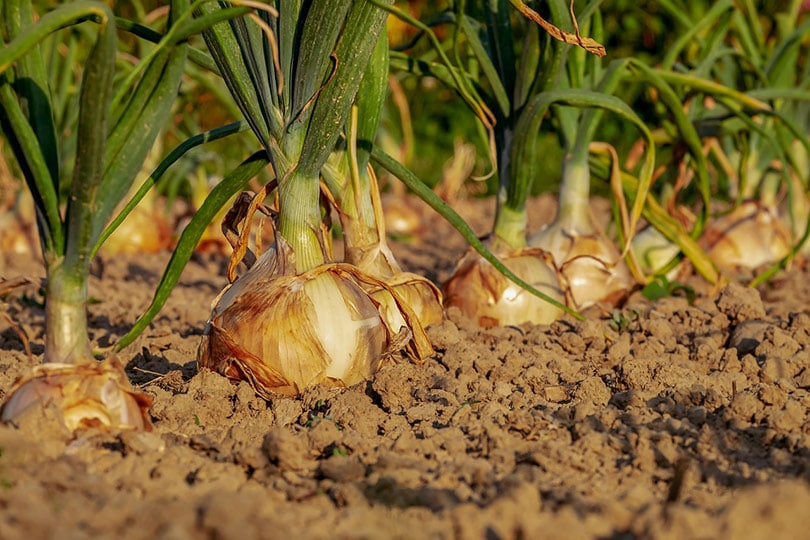
| USDA Hardiness Region | 5–7 |
| Sun | Full sun |
| Soil | Well-drained/fertile/slightly acidic |
| Vitamins | C, B6 |
Onions are hardy, low-maintenance vegetables that you can find in any household worldwide. They are quick growers, and their bulbs are beneficial for our health. You should plant them in full sun so that their bulbs can grow and water them frequently. Onions are generally only 12–18 inches tall, and when planting them, you will need to place the seeds 1–2 inches apart. Since they can be harvested any size, you can determine the harvest period.
11. Cauliflower
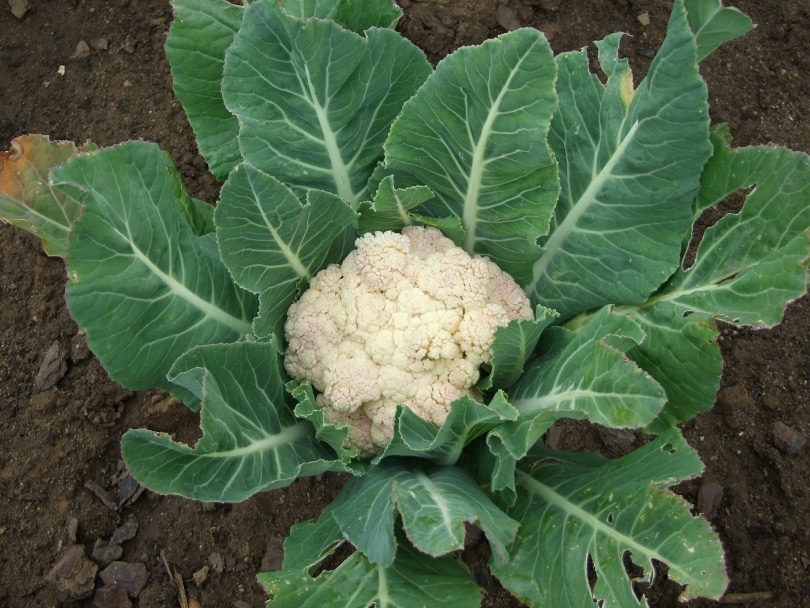
| USDA Hardiness Region | 2–11 |
| Sun | Full sun |
| Soil | Rich/moist/well-drained |
| Vitamins | C, K |
Cauliflower is a white veggie that resembles broccoli due to its shape. They can be biennial or annual plants. Raw cauliflowers are edible, and you can use them for salads or cook them, although they might lose their nutritional value. For cauliflower to flourish, you need to maintain even moisture throughout the season. They are best grown during fall, but you can grow them in spring as well. When planting, place each cauliflower plant around 12–24 inches apart.
12. Brussel sprouts

| USDA Hardiness Region | 4–7 |
| Sun | Full sun/partial shade |
| Soil | Well-drained/moist/fertile |
| Vitamins | K, C, A |
Brussel sprouts are small veggies that look like tiny cabbages. They are crunchy and have a sweet taste that makes them stand out, especially during winter when their flavor is improved. It requires a bit more maintenance than some of the other vegetables we mentioned, as it’s prone to pests. Brussel sprouts can be anywhere from 2–3 feet high. They are commonly grown in summer so you can harvest them in the fall.
 Final Thoughts
Final Thoughts
Growing vegetables is not easy, but there’s no better reward than being able to eat veggies freshly picked from your garden. You’ll no longer need to doubt the quality of the product you eat and you’ll always have a healthy snack on the table. Choose the plant that looks the best for your need and wishes, check out planting tips and tricks, and improve your garden with a new veggie.
Featured Image Credit: Innviertlerin, Pixabay
Contents


